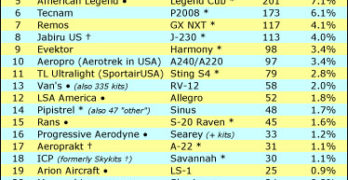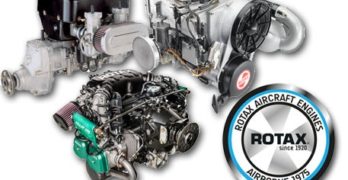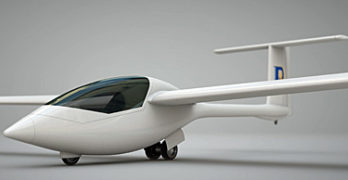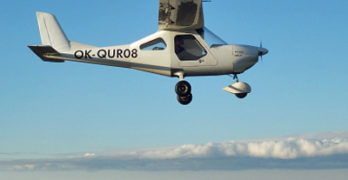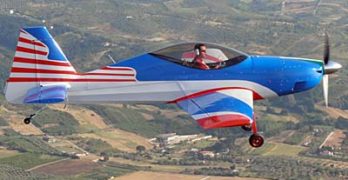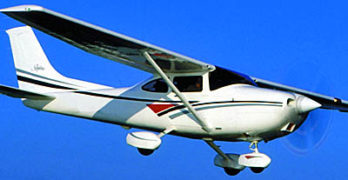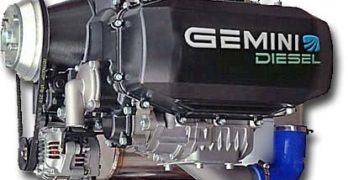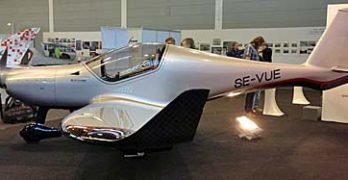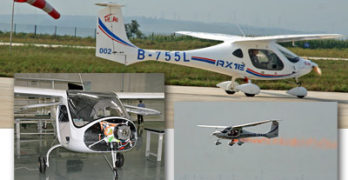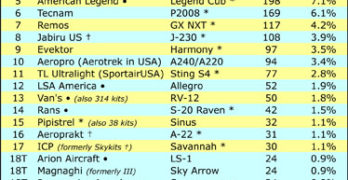The U.S. market for Special Light-Sport Aircraft continues to grow at steady pace, modestly better than the trend for single engine piston certified aircraft as reported by the General Aviation Manufacturers Association for the first half of 2015.
SLSA deliveries in the half-year period totaled 97 units, with 91 of those coming from 15 manufacturers, showing that the famous 80/20 rule still generally applies … more than 80% of the market is supplied by less than 20% of the builders. It also implies the majority of those companies who previously earned FAA acceptance for their LSA models are either quite slow or inactive in the U.S. market.
We’d prefer to describe vigorous growth but the so-named Great Recession seems to be lingering on; at least it appears the much-talked-about recovery has left most of aviation still looking for improved business. Evidence of a still-troubled global economy is even clearer when you consider the wild stock market gyrations of recent weeks.
Search Results for : motorglider
Not finding exactly what you expected? Try our advanced search option.
Select a manufacturer to go straight to all our content about that manufacturer.
Select an aircraft model to go straight to all our content about that model.
Forty Years of Rotax Aircraft Engines
Aircraft engine giant, Rotax BRP has reached an anniversary: forty years of making powerplants used around the world by airframe makers of ultralights to Very Light Aircraft. Thus, it was hardly a surprise when Light-Sport Aircraft came along eleven years ago that the Austrian company immediately became the largest supplier of engines … capturing an estimated 80% of the market, even while other ASTM-approved engines are in use from Continental, Jabiru, Lycoming, and HKS. New candidates include Superior’s Gemini Diesel and, of course, the ECi Titan 180-horsepower engine has seen good acceptance. Then we have another batch of engines for kit-built aircraft including Viking (based on Honda), UL-Power, AeroVee (VW), AeroMomentum (Subaru), Corvair, and more.
Despite the many other choices, Rotax has retained a dominant position. I’ve long felt that while it can be challenging to bring a new airframe to market and win some customers, it is even harder to introduce a new engine.
Innovative Hybrid: Jet Power with Electric Motor
Some people, myself included, love soaring flight. As the following article from Dave Unwin explains, to use his words, “Soaring flight exercises a fascination that is both difficult to explain and hard to resist, sometimes called ‘three-dimensional sailing.’ Flying a heavier-than-air machine for several hours and hundreds of miles by using the atmosphere as the fuel possesses an undeniable attraction.” As he further explained in a longer article, the downside is getting airborne for soaring flight. Various alternatives have been explored. Some were reasonable; others were too marginal to be enjoyed. In the following piece Dave tells about a new aircraft that might solve this problem, one that can fit England’s innovative SSDR 300 (kilogram) category. —DJ
Article Updated 6/17/15 — ProAirsport announced, “We have now released a priority price of 39,950 British pounds (about $63,000). More details can be found on our website.” This is an excellent value for a motorglider.
PSA: An Affordable Aircraft?
The following article is a guest editorial by Chip Erwin, a name many rightfully associate with the highly successful SportCruiser LSA. A restless entrepreneur, Chip has been working behind the curtain for several years. He emerged with the Zigolo and is now proposing a fresh name for a segment that seems to have energy behind it. I have reported on England’s new SSDR 300 category and I have observed the rejuvenation of Part 103 vehicles. So, on our recent travels to China, I encouraged Chip to express what he has in mind.
Article Update 6/15/15 — At the end of this article see our video shot at Sun ‘n Fun 2015 regarding Chip’s electric motor and plans.
Is “affordable aircraft” an oxymoron? For most people, probably yes. One answer could be a class of aircraft I like to refer to as a PSA, or Personal Sport Aircraft.
Is FAA Falling Behind Other National CAAs?
Let’s set the way-back machine to two dates and examine the actions of our good friends at FAA. One date was September 1982. Another date was September 2004.
Date #1 was the time when FAA announced Mike Sacrey and team’s remarkable Part 103. This rule has lasted for 33 years and continues to hold interest (see earlier article on the subject). Date #2 was when FAA announced the SP/LSA rule engineered by Sue Gardner and her team. I continue to applaud their initiative for both simplified rules where they stepped far back and let the market do its magic. Both have increased the freedom of pilots to fly what and how they prefer. Kudos, FAAers!
Part 103 is strictly single seat since the two-seat “103 trainers” were forced into ELSA status. Does a market exist for one-place aircraft? I always cite this survey result from AOPA. After many years of asking, the big member group determined the average occupancy of a GA aircraft was 1.6 persons.
Analyzing Statistics on Worldwide Aviation
Update Notice — The following article has been updated to reflect additional information. Please read at this link.
Thanks to a solid effort by GAMA, the General Aviation Manufacturers Association, I have data that can be used to assess the numbers of recreational aircraft around the world. That organization is significantly focused on business aircraft but did include all levels of aircraft in their country-by-country review. Whatever the actual level of accuracy — GAMA is wholly dependent on the data the organization received from various CAAs in each country — GAMA’s data is some very useful info and I am in their debt for the information discussed in this review.
In addition to GAMA having to use whatever each country reported, the methods of reporting were not consistent. For one noteworthy example, several countries listed as their smallest aircraft those weighing 5,700 kilograms (12,540 pounds), which represents far larger aircraft than your typical four-seat GA aircraft and certainly any recreational aircraft.
Is Diesel Power for LSA Superior? Yes!
“So, it looks like Rotax has finally got some worthy competition,” was a comment I received as I walked into the Sun ‘n Fun press headquarters work room. The observation came from a fellow journalist at one of the big aviation magazines. He is aware Rotax dominates the light aircraft market with an estimated 75-80% of all engine installations, even higher overseas. Who is going to give the big Austrian engine manufacturer some competition?
Superior Air Parts got started back in 1967 making components for certified engines such as Lycoming but long ago branched into their own engine line. Companies like Arion Aircraft is using an Experimental Superior XP powerplant for their new EAB speedster similar to but quite a bit faster than their LS-1 Light-Sport model. Like Arion, many already knew of the gasoline engines from this Texas company, but I knew something was up when I was approached at Sebring about a new project.
Exciting Development Projects at Aero 2015
Aero is such an interesting event for many reasons. Among the most significant of these are the large number of aircraft introductions or the newest development projects one discovers in the vast gymnasium-sized halls … eleven of them in total. It can be hard to cover all the square meters, which although not as enormous as giant outdoor American shows, are nonetheless so packed with aircraft that one gets sensory overload before you’ve seen them all.
The world premiere of BlackWing was such a project. Here is the first light aircraft I’ve seen from Sweden; others may exist but I’m not aware of them. This sleek speedster uses the ubiquitous Rotax 912 to achieve what they state as stunning speeds up to 400 kilometers per hour (250 mph or 217 knots) and this from only 100 horsepower! Of course, this won’t work as a Light-Sport Aircraft but BlackWing is LSA in size and concept other than its blazing speed.
eAirplanes at Aero 2015 Plus Major Motor News
With Aero mere days away now, excitement is growing for the electric aircraft event-within-the-event. Visitors can tour around the entry foyer hall where the e-flight-expo will be located. This year offers a few highlights, provided to me from my publisher friend Willi Tacke in Germany.
One aircraft not many Europeans and even fewer Americans have seen is the Chinese RX1E made by the Liaoning Ruixiang General Aircraft Manufacturing Company. An electric motorglider, RX1E earned its CAAC Type Design Approval (TDA) earlier this year using ASTM standards (article). Willi reported, “The Chinese team lead by chief developer Professor Dr. Yang Fengtian is now seeking certification in other countries such as Germany or France.
Some companies will not be attending not because their projects have stopped but because they are at critical junctions. Among those missing will be the Volocopter from e-Volo nor any man-carrying aircraft display by Yuneec — which last year showed their eSpyder that had just won German approval.
LSA Market Shares — Fleet and Calendar 2014
As spring approaches and with major airshows like Aero Friedrichshafen in Germany and Sun ‘n Fun in Florida about to trigger a new season of recreational flying, it is time for an annual update of Light-Sport Aircraft market shares. Our well-known “fleet” chart appears nearby; this table refers to all Special LSA registered with FAA in the United States since the first aircraft was accepted by FAA almost ten years ago (on April 5, 2005).
We again post our Calendar 2014 tally that shows the success only in that year as a means of drawing attention to those brands and models performing the best in the last twelve months. We remind you that these charts use as their source the FAA registration (N-number) database, that is then carefully studied and corrected to make the most reliable report possible. However, two points: (1) this report will still have some errors as the database on which we rely has some faulty information … though we believe this to be modest and, as noted, we correct it where we can; and, (2) aircraft registrations are not likely to be perfectly in sync with company records of sales for a variety of reasons.
- « Previous Page
- 1
- …
- 8
- 9
- 10
- 11
- 12
- …
- 23
- Next Page »


